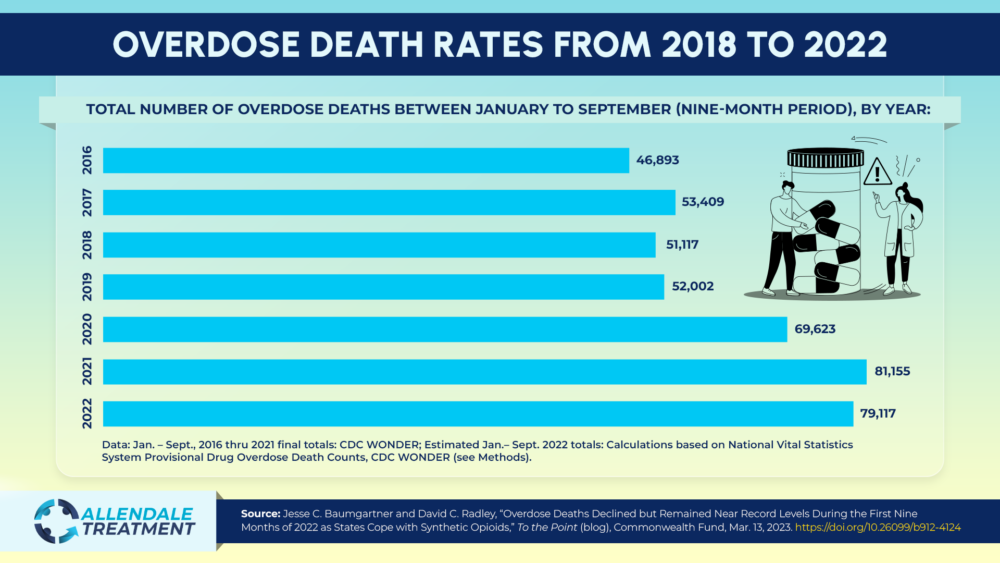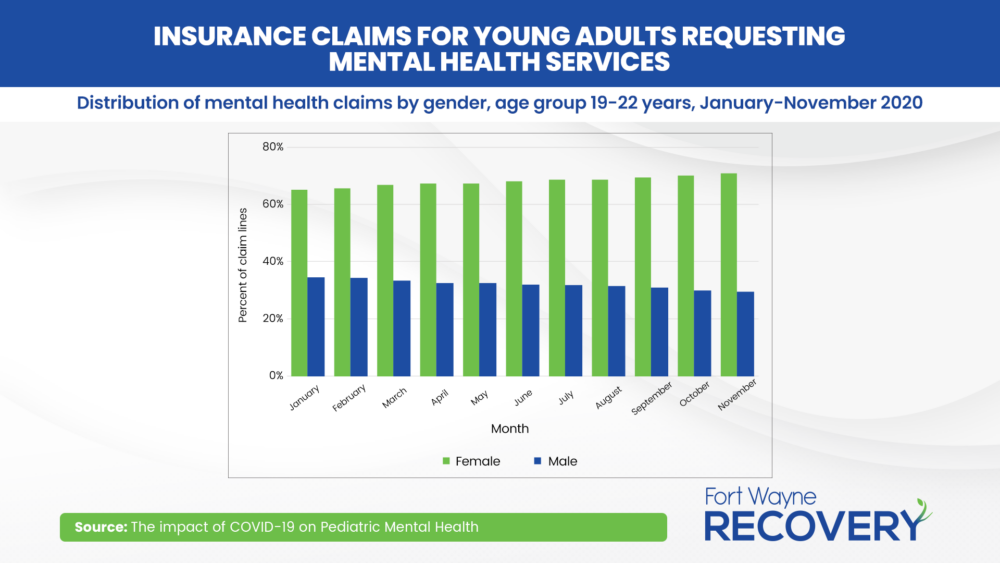Why COVID Could Put Adolescents at an Increased Risk for Developing a Substance Use Disorder
Why COVID Could Put Adolescents at an Increased Risk for Developing a Substance Use Disorder
It may be several years before experts know the full impact the pandemic has had on people’s physical and behavioral health but initial studies suggest that teenagers are still struggling mentally. Data shows that in 2022 over 15% of adolescents experienced at least one major depressive episode.
While some studies indicated a decrease in substance abuse in young people during the early months of the pandemic due to the lack of interaction with peers in environments where they had access to drugs and alcohol, data also shows that over 60% of adolescents reported not receiving any mental health treatment.
15%
of adolescents experienced at least one major depressive episode
While it’s impossible to predict how many teenagers will develop a substance use disorder (SUD) in the future, factors such as the prominence of deadly illegal drugs such as fentanyl and untreated behavioral health issues put this demographic at an increased risk.
Adolescent Overdose Rates Remain Higher Post Pandemic
Overdose deaths among U.S. teenagers nearly doubled during the first year of the pandemic and increased another 20% during the first half of 2021. This was the first time that the teen drug overdose death rate has seen such a drastic rise according to Joseph Friedman, an addiction researcher and M.D. and Ph.D. candidate at the David Geffen School of Medicine at UCLA. He attributes this not to an increase in adolescent drug use but to the widespread availability of a more lethal drug. “The increases are almost entirely due to illicit fentanyl, which is increasingly found in counterfeit pills,” says Friedman. “These counterfeit pills are spreading across the nation, and teens may not realize they are dangerous.”
Nate Moellering, a community outreach coordinator at Allendale Treatment and Fort Wayne Recovery agrees and says that young people may feel that if they try drugs once or twice it’s not a big deal but that’s not the case. “Teenagers are unknowingly purchasing deceptive counterfeit versions of Percocet, Xanax, Adderall, Vicodin and other prescription pills that are laced with fentanyl which is 50 times stronger than heroin,” says Moellering. “Even though it might be the first time they’re experimenting with illegal drugs, it only takes 1 pill to cause an overdose or death and teenagers need to be aware of the risks.”
“Even though it might be the first time they’re experimenting with illegal drugs, it only takes 1 pill to cause an overdose or death and teenagers need to be aware of the risks.”
“Even though it might be the first time they’re experimenting with illegal drugs, it only takes 1 pill to cause an overdose or death and teenagers need to be aware of the risks.”
Friedman says that schools need to provide students with accurate information about the risks associated with drug use and theyF should also be educated on prevention methods such as fentanyl testing strips and naloxone which can reverse an overdose.
Organizations such as Song for Charlie are also a great resource for teenagers to access detailed information about how the drug landscape has changed in recent years causing fentanyl to be responsible for 79% of drug-related deaths in Gen Z, which is higher than any other age group.
“Schools need to provide students with accurate information about the risks associated with drug use”
Joseph Friedman, An Addiction Researcher and M.D. and Ph.D. candidate at the David Geffen School of Medicine at UCLA
Teenagers Continue to Struggle with Their Mental Health
A study from the US Centers for Disease Control and Prevention (CDC) found that most adolescents experienced major disruptions to their school, family and social life during the pandemic which has caused a higher prevalence of mental health issues including persistent feelings of sadness, hopelessness and suicide attempts.
2020 National Survey on Drug Use and Health reported that in data collected between October and December 2020, youths aged 12 to 17 who had a past-year major depressive episode (MDE) said they were more likely than those without a past-year MDE to feel that the pandemic negatively affected their mental health “quite a bit or a lot.” The survey also reported the following trends among adolescents:
In an additional study by The American College of Obstetricians and Gynecologists that was updated in 2020, they found similar concerning mental health trends among adolescents including:
“Youth are in crisis,” says Kathleen Ethier, director of the CDC’s Division of Adolescent and School Health. “This data and others like it show us that young people and their families have been under incredible levels of stress during the pandemic.”
“Youth are in crisis,” says Kathleen Ethier, director of the CDC’s Division of Adolescent and School Health. “This data and others like it show us that young people and their families have been under incredible levels of stress during the pandemic.”
Nate Moellering, a community outreach coordinator at Allendale Treatment and Fort Wayne Recovery “Many times what I’ll see with individuals I work with is that treatment will help them clear up some of the substance use orders and then the mental health portion becomes the primary focus because the drugs and alcohol are not the problem, they’re symptoms of the problem.”
“Drugs and alcohol are not the problem, they’re symptoms of the problem”
Nate Moellering, A Community Outreach Coordinator at Allendale Treatment and Fort Wayne Recovery
How Untreated Mental Health Issues Can Spiral into Addiction Later On
The Substance Abuse and Mental Health Services Administration (SAMHSA) states that while both people with and without disabilities often experience barriers to treatment but the disabled face additional barriers. The American Association of Health and Disability reported that more than 50% of substance use treatment facilities had to turn away patients with traumatic brain or spinal cord injuries because the facilities were not wheelchair accessible. This was the case whether or not the facilities were public or privately owned, or were residential, outpatient, or hospital-based.
While it may be several years before we see the long-term impact COVID has on adolescents as they transition into adulthood, untreated mental health disorders could spiral into SUDs later in life. Common behavioral health issues seen during the pandemic that co-occur with addiction include social anxiety, ADHD, PTSD and depression.
For adolescents who are already struggling with substance abuse, their parents must get them addiction treatment as soon as possible so that they can tackle both their SUD as well as the behavioral health issues that are causing it. Treatment options vary and can include in-patient detox and treatment centers, private therapy, or recovery support groups such as AA or NA. Parents or legal guardians should also look into options that specialize in treatment for teenagers or young adults. The good news is that if teenagers can address and seek treatment for any mental health issues brought on by the pandemic early on, they are less likely to develop a SUD later in life.



